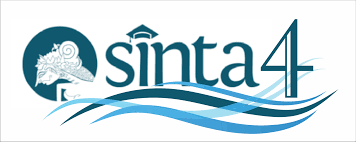MAINTAINABILITY OF BAHASA MALAYSIA BY MALAYSIAN STUDENTS IN MEDAN
Abstract
The background of this research was how Malaysian students maintain their Malaysian language in Medan even when they were far from their language domain. When a certain language speaker moved to other area which use different language and interact with them, they tend to adopt that new language. The objectives of this study wire to find what factors that induce maintainability of Malaysian language by Malaysian students in Medan, and how is the maintainability of Malaysian language realized by Malaysian students in Medan and also why the maintainability of Malaysian language is the way it does. This research used descriptive research by giving the Malaysian students a questionnaire and interviewing them. There were 21 Malaysian students as informants, 16 men and 5 women. It was found that the maintainability happened because Malaysian students were living in group, so they still use Malaysian language regularly. Even when they were far from Malaysian language domain, they still accessed Malaysian language media such as music, news, TV, radio etc regularly and still active in chatting application with their friends who are still living in Malaysia and use Malaysian language. They realized they maintainability of Malaysian language by joining Malaysian community, where many Malaysian students gather and speak in Malay, they also have good language attitude towards Malaysian language. Those happened because when they lived in a foreign environment they tried to find other Malaysian students to fell like home. That makes them living together with other Malaysian students in group.
An author who publishes in the Jurnal Darma Agung agrees to the following terms:
- Author retains the copyright and grants the journal the right of first publication of the work simultaneously licensed under the Creative Commons Attribution-ShareAlike 4.0 License that allows others to share the work with an acknowledgement of the work's authorship and initial publication in this journal
- Author is able to enter into separate, additional contractual arrangements for the non-exclusive distribution of the journal's published version of the work (e.g., post it to an institutional repository or publish it in a book) with the acknowledgement of its initial publication in this journal.
- Author is permitted and encouraged to post his/her work online (e.g., in institutional repositories or on their website) prior to and during the submission process, as it can lead to productive exchanges, as well as earlier and greater citation of the published work (See The Effect of Open Access).













